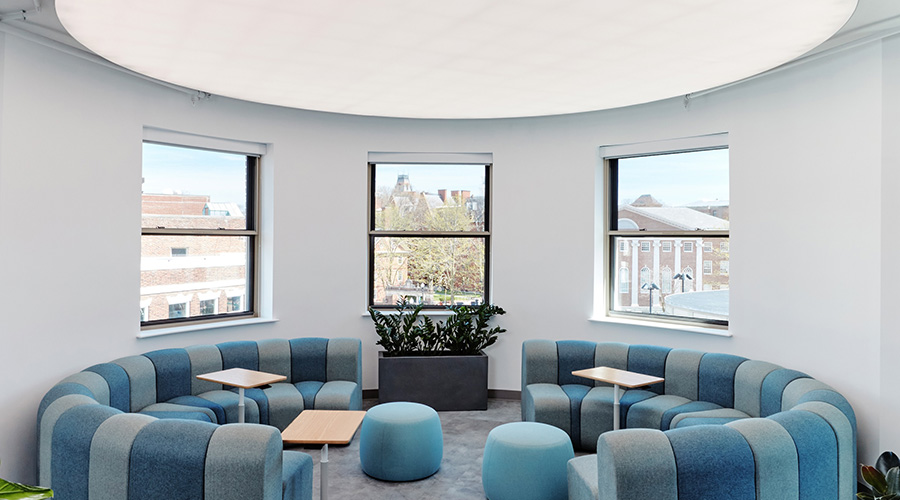Denser Workplaces Can Lead To Distracting Noise
There are plenty of reasons for companies to squeeze more employees into less space. Denser workplaces reduce real estate costs and can encourage collaboration. So can shorter workstation panels or the use of benching with no panels at all.
One thing this new generation of workspaces doesn't offer is much speech privacy. "A cubicle that goes up four feet doesn't do much of a job (blocking sounds)," says Kring Herbert, principal at Ostergaard Acoustical Associates. "Four-foot barriers are ineffective acoustically."
As a result of these changes, facility managers may find themselves paying more attention to acoustics to mitigate the distraction of intelligible voices.
Many Reasons For Problems
Acoustical complaints aren't new. Sean Browne, a senior research scientist, global acoustics, Armstrong World Industries, says that the Center for the Built Environment at the University of California, Berkeley, did a survey in 2003 that showed 72 percent of workers in closed, open, and mixed offices were dissatisfied with speech privacy.
But new office designs have added to acoustical concerns. "Noise disruptions are more of an issue today because of changes in how open offices are designed," says Niklas Moeller, vice president of KR Moeller Associates Ltd., which produces the LogiSon Acoustic Network. "The trend in recent years has been moving toward even greater percentages of open space, partitions that are below an acoustically effective height, reduced absorption through the elimination of acoustical ceilings, and the use of more hard materials."
As offices remove more and more of the materials that can block or absorb human speech, distractions are increasing. For example, barriers are being lowered to let more natural light in offices, says Ben Markham, director of architectural acoustics at Acentech. Some people are thoughtfully designing greener spaces, but others make mistakes. "Many designers attracted to the open-office concept don't give much thought to speech privacy, distraction, or productivity," says Markham.
Compounding the problem is that many of today's offices have VAV systems and lower noise criteria (NC) ratings caused by low velocity air flow from pressurized raised floor plenums. These varying and lower level ambient background sound levels increase the signal-to-noise ratio and thus paradoxically make the office noisier, says William McCann, executive vice president of sales and marketing for Dynasound. The trend towards desking systems and low furniture panel heights for LEED certification has compounded the problem. The result is that it can be easier to overhear, and be distracted by, conversations
Tackling Acoustical Concerns
One important solution to the increased distraction of human voices is sound masking systems. Building a productive space requires a holistic approach, including elements such as a ceiling that absorbs or blocks sound, says McCann. Effective sound masking takes into consideration the frequency range of human speech as well as the signal-to-noise ratio to reduce the radius of distraction and thus reduce worker distractions and increase productivity and accuracy.
Related Topics:












